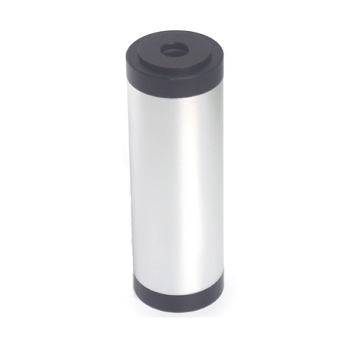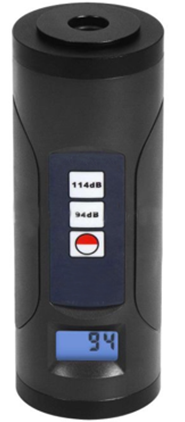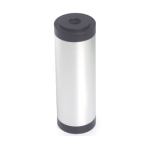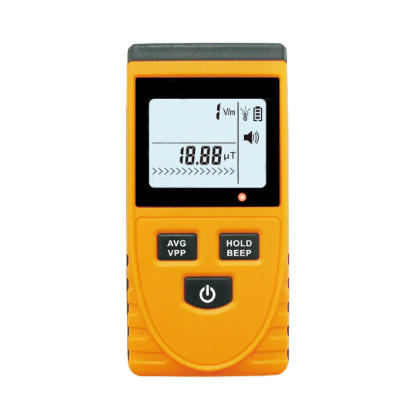Description
Overview
GAOTek Sound Level Calibrator (Sensitivity Calibration) is a small, lightweight, easy to carry device for quick and easy sensitivity calibration of sound level meters and sound measuring systems in the field as well as in laboratory. The Calibrator makes use of solid state integrated circuitry that provides accurate and stable performance and can give output level of sound pressure at 94 dB or 114 dB. This device is capable of carrying out sensitivity calibration of microphones.
Features
- Sound pressure level 94 dB and 114 dB
- Calibration of 1” and 1/2” microphones
- Frequency of 1000 ±0.01 % Hz allows calibration with A, B, C or D weighting networks or linear.
- Extremely low influence of static pressure
- Altitude effect: Approximately 0.1 dB decrease for each 0.37 mi (2000 ft) increase in altitude from sea level to 2.27 mi (12,000 ft) elevation, or comparable atmospheric pressure change (approximately 50 mm of Hg decrease)
- Battery operated
- Low battery indicator
- Battery life of approximately 100 hours
- Conforms to IEC 942 class 1
Technical Specifications
| GT00X900ZZ-A | GT00X900ZZ-B | |
| Accuracy | ±0.5 db | ±0.4 dB (68 °F (20 °C), 29.92 in (760 mm) Hg |
| Frequency | 1000 Hz | 1000 ±0.01 % Hz |
| Temperature Range | 14 °F to 122 °F (-10 °C to 50 °C) | 14 °F to 122 °F (-10 °C to 50 °C) |
| Storage Temperature (with batteries removed) | -40 °F to 149 °F (-40 °C to 65 °C) | -40 °F to 149 °F (-40 °C to 65 °C) |
| Temperature Coefficient | 0 to 0.01 dB/°C | 0 to 0.01 dB/°C |
| Power Source | 1 × 6F 22 9 V battery | Two 9 V transistor batteries |
| Size | 5.59 in × 1.85 in × 1.85 in (142 mm × 47 mm × 47 mm) | 1.88 in × 1.88 in × 5.43 in (48 mm × 48 mm × 138 mm) |
| Weight | 0.60 lbs (275 g) (including batteries) | About 0.55 lbs (250 g) |
Additional Information
Front Panel Description

- 3-1 Transducer Cap
- 3-2 Microphone adaptor
- 3-3 Battery Cap
- 3-4 OFF/ON (94 dB or 114 dB select switch)
- 3-5 Lo Battery Indicator (LED)
Operation
This Calibrator is designed to check the accuracy of many types of sound instruments. This instrument commonly uses the standard 1/2-in diameter ceramic microphone which fits directly into the calibrator coupler cavity. When testing an instrument with a 1-in microphone, the proper adaptor ring must first be taken out. This keeps a close tolerance fit around the microphone head. Be sure the microphone fits down inside the adaptor and rests on the lower rim. This rim supports the microphone and forms the necessary inner seal.
Operation Procedure
- Set Calibrator switch to 94 dB or 114 dB position. A 1000 Hz tone should be heard.
- Turn on the sound level meter which is to be calibrated.
- Carefully insert the microphone into the calibrator coupler. Make sure the microphone is down inside the coupler resting flush on the lower coupler rim.
- When calibration has been made, carefully remove the microphone and turn calibrator to OFF.
Effects of Atmospheric Pressure and Temperature
For any one location, the effects of normal variations of atmospheric pressure are usually negligible. But most calibrators are affected by the altitude. The transducer diaphragm within the calibrator creates the sound as it vibrates against the air. When the air is thinner (at higher elevations) a lower sound level is produced.
This instrument is calibrated to produce 94 dB at sea level. When the unit is operated above sea level a slightly lower sound level is emitted depending on altitude. For each 2000 feet of elevation above sea level the instrument produces 0.1 dB less than the 94 dB rating. As an example, the calibrator will only emit 93.7 dB at an elevation of 6,000 feet. Therefore, a sound level meter should be set at 93.7 dB, not at the rated 94 dB. The effects of temperature are less than ±0.05 dB/°C (reference is 73.4 °F (23 °C)).
Battery Replacement
When it is necessary to replace batteries, that is battery indicator become dim, unscrew bottom ring, slide off face plate and outer shell to expose batteries.
Care of the Instrument
- Immediately clean any spilled materials from the Instrument and wipe dry. If spillage is corrosive, use a suitable cleaner to remove it and to neutralize corrosive action.
- Remember to turn off the Instrument when not using it.
- Avoid prolonged exposure or usage in areas subject to temperature and humidity extremes, vibration, mechanical shock, dust, corrosive fumes, and strong electrostatic and electromagnetic interference.
- Be sure the transducer cap is firmly in place.
- If the Instrument has not been used for 30 days, check battery for leakage, and replace if necessary.
- When the Instrument is not in use, store it in a room free from temperature extremes, dust, corrosive fumes, mechanical vibration, or shock. If storage time is expected to exceed 30 days, remove the battery.






